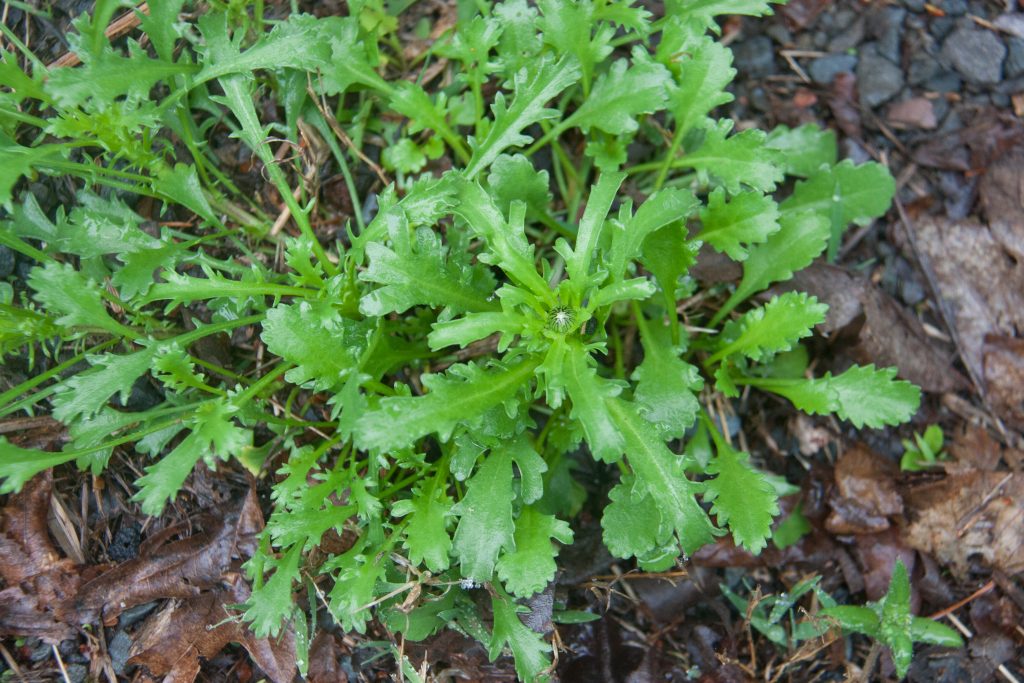
Is it a weed? Is it a pretty garden flower? In my book, oxeye daisy is an attractive perennial, with tasty leaves, edible flowers, and (I’ll admit it) an aggressive growth habit. If you’re someone who needs to tightly control every plant in your garden, oxeye daisy isn’t for you. But if you appreciate a free-form, natural landscape, why not let a few oxeye daisies naturalize in your yard? You can add the leaves and petals to salads, and use the leaves in mixed greens recipes where their flavor adds a unique peppery, lemony note.
Oxeye daisy grows first as a basal rosette of glossy, deep green foliage, with scalloped leaf margins. In early summer the plant produces one or more flowering stems. Basal leaves are larger and juicier than the stem leaves and the basal rosette overwinters in milder climates. Several states (MT, CO, OH, WA, WY) have classified the oxeye daisy (formerly known as Chrysanthemum leucanthemum) as a noxious weed, and some have forbidden commercial sales of the plant. If you want to rid yourself of unwanted oxeye daisies, pull up their basal rosettes and use the foliage in salads. The root system is relatively shallow, making it easier to pull up than other edible weeds like dandelion or bishop’s weed. It grows best in full sun but tolerates part shade, although it will produce fewer flowers in lower light.
The composite flower of the oxeye daisy is made up of white, sterile ray flowers (what we consider the petals) and yellow, fertile disc flowers (what we consider the center). The blooms are attractive, but their flavor isn’t especially remarkable. It’s a fresh, mild taste and pretty on the plate as an edible garnish.
White flower petals should be plucked as soon as the blooms have fully opened. The yellow disc flowers may contain insects attracted to their pollen, so be sure to wash them thoroughly before adding them to your plate. I don’t like the texture of the disc flowers, so I don’t eat them, but I use the petals to brighten up a salad.
The leaves are the tastiest part of this plant. Nibble one before harvesting a batch, to be sure you like the flavor. It’s stronger than mild greens like miner’s lettuce and bishop’s weed. The flavor is an interesting combination of spinach, lemon, and pepper. Raw, it’s snappy tucked into sandwiches and mixed with other greens in salads. Cooked oxeye daisy foliage mixes well with other greens in pies, soups, stews, and quesadillas. And as with many spring greens, the leaves are tastiest when picked before the plant blooms.
Since oxeye daisies are often found in abundance, you should be able to pick plenty of foliage while leaving the plants intact; just spread your harvest among several plants.

I have read that the flower heads can be dried and powdered to be used as a flea powder. I have not tried it on fleas, as I haven’t experienced an issue yet, but did dry and powder some last season to have on hand.
Interesting! I don’t have a flea issue to experiment with either. Please let me if you ever do give it a try.